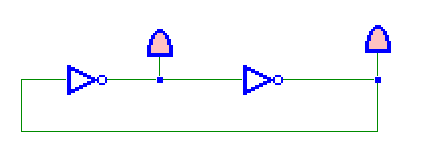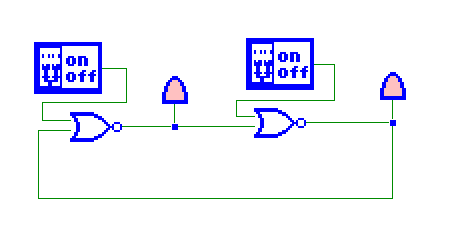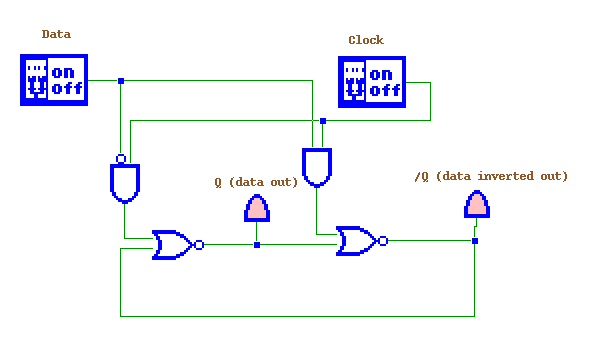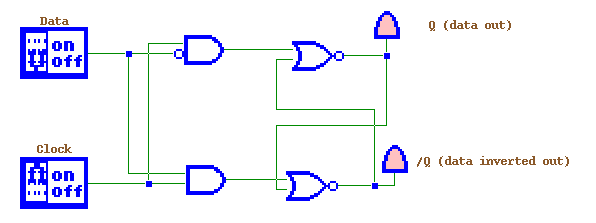Limitations on Computing
CS 441 Lecture, Dr. Lawlor
First, some more review: flip-flops.
It's just a two inverters in series, looped back on the other one, so
it has two stable states: one inverter outputting true, or the other
outputting true.

Of course, it's handy to be able to write values into a flip flop, so a
"RS" (Reset and Set) flip-flop is made from NOR gates. (Click for
the TkGate source file.)

If both switches are off, the flip-flop just remembers its previous
value. If you turn on the left switch, "Reset", it makes the
middle wire go high and the right wire go low, storing a zero. If
you turn on the right switch, "Set", it makes the wrap-around wire go
low and the middle wire high, storing a one.
Often you want a "data" input, so you decode data and a write enable
line typically called "clock" to make the set and reset lines above:

Flipflops are normally drawn with the two NOR gates' wires crossed,
which looks a little more symmetrical but substantially more confusing
(to me). This is the same circuit:

These flip-flops can be replicated one after another to store an
arbitrary number of bits. A collection of bits that can be read
or written together is a "register". A collection of registers is
called a "register file".
Analog Circuit Limitations
There are a surprising number of underlying analog problems with real
circuits. For example, as a digitial circuit, this is an
oscillator:

But if you actually build it, this doesn't oscillate between true (3.3v) and false (0v), it get stuck around 1.1v!
The problem is that both underlying FET gates tend to get stuck halfway
on, averaging out the supply voltage, and this input leaves the FET
gates stuck halfway on.

So there is a stable state in the analog circuit not found in the digital circuit.
Similarly, analog problems are recurring in semiconductor
fabrication. For example, due to electron quantum tunneling, for
45nm chips Intel had to switch out the silicon FET gate material for a hafnium FET gate insulator.
We're now at 32nm chips. One silicon atom is 0.1nm, so our
transistors are already only a few hundred atoms across!
One of the biggest analog problems chip designers have faced for
decades is time. It takes about 0.1ns for a modern FET gate to
switch. So each logic gate that a signal passes through slows it
down by 0.1ns, so complex circuits with dozens of gates in the critical
path may take over a nanosecond to propagate through, cutting the
circuit's clock speed to below a gigahertz (clock
frequency==1.0/maximum propagation delay). So, for example,
typical CPU designs do not have thousands of registers--it would be
easy to fit them all on a chip, but the ten-layer deep selection logic
would have too big an impact on the CPU's clock speed!





